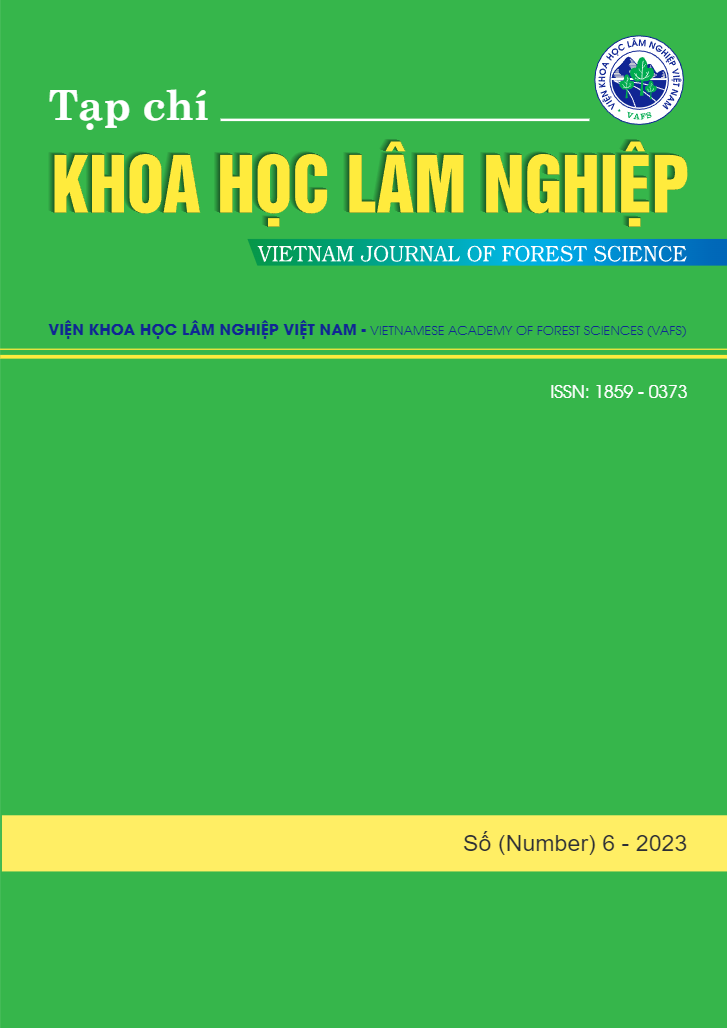EVALUATION OF THE PHYSICAL AND CHEMICAL INDICATORS OF SOIL IN THE NATIVE TREE PLANTATION MODEL UNDER THE RENFODA PROJECT IN THE WATERSHED AREA OF THE DA RIVER, HOA BINH PROVINCE
Keywords:
Project RENFODA, chemical analysis, native tree plantation model, watershed protection forest, physical propertiesAbstract
The study was conducted on native tree plantation models in the vulnerable forest protection area along the Da River in Hoa Binh Province, under the RENFODA project from 2006 to 2022. Soil samples were analyzed in the Laboratory of Soil, Environment, and Microbiology using methods specified by Vietnamese standards (TCVN). The results after 16 years of planting native trees showed significant positive changes in the physical and chemical properties of the soil across the different models, gradually improving over time. The soil moisture content in the models ranged from 2.82% to 2.98%, which was moderately dry compared to the very dry control model at 2.59%. The mechanical composition of the soil showed minimal variation among the models, with clay content ranging from 26.56% to 26.70% compared to 26.77% in the control model, silt content ranging from 34.49% to 34.87% compared to 34.35% in the control model, and sand content ranging from 38.57% to 38.81% compared to 38.88% in the control model. The average pHKCl acidity ranged from 3.84 to 3.92, indicating a higher level of acidity compared to the control model at 3.66. The total organic matter content ranged from 2.56% to 2.74%, which was moderate compared to the very poor level of 2.02% in the control model. The total nitrogen content ranged from 0.08% to 0.13%, which was moderate compared to the very poor level of 0.03% in the control model. The readily available phosphorus content ranged from 49.68 to 60.89 mg/kg, indicating a poor level compared to the very poor level of 32.06 mg/kg in the control model. The readily available potassium content ranged from 57.18 to 65.79 mg/kg, indicating a poor level compared to the very poor level of 41.45 mg/kg in the control model. After 16 years of forest planting, there was significant improvement in some physical and chemical soil properties, leading to favorable changes in the soil conditions for plant growth. All native tree plantation models had a noticeable effect on soil improvement, with the model incorporating Reynoutria japonica showing the highest effectiveness in soil reclamation compared to the other native tree models.









